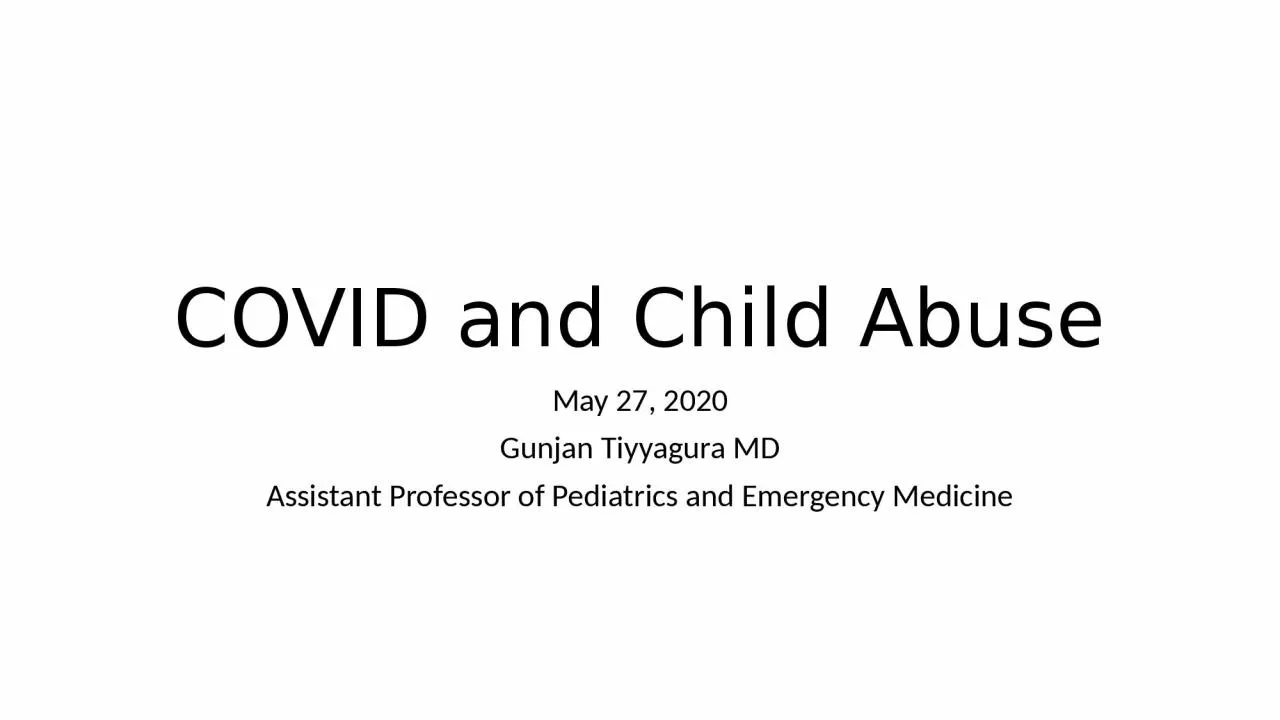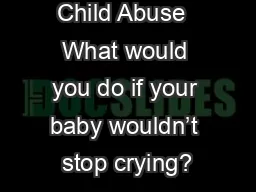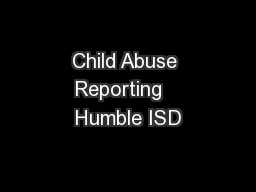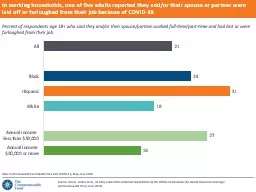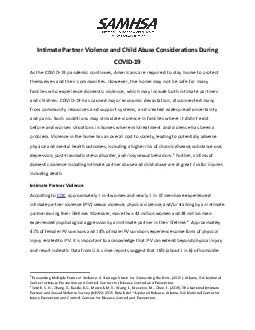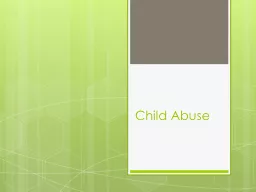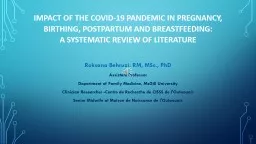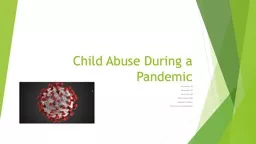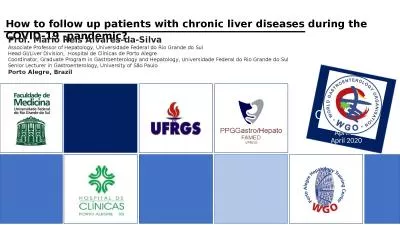PPT-COVID and Child Abuse May 27, 2020
Author : amelia | Published Date : 2023-11-16
Gunjan Tiyyagura MD Assistant Professor of Pediatrics and Emergency Medicine Objectives Review risk factors for child abuse Consider parental stress Recognize
Presentation Embed Code
Download Presentation
Download Presentation The PPT/PDF document "COVID and Child Abuse May 27, 2020" is the property of its rightful owner. Permission is granted to download and print the materials on this website for personal, non-commercial use only, and to display it on your personal computer provided you do not modify the materials and that you retain all copyright notices contained in the materials. By downloading content from our website, you accept the terms of this agreement.
COVID and Child Abuse May 27, 2020: Transcript
Download Rules Of Document
"COVID and Child Abuse May 27, 2020"The content belongs to its owner. You may download and print it for personal use, without modification, and keep all copyright notices. By downloading, you agree to these terms.
Related Documents

